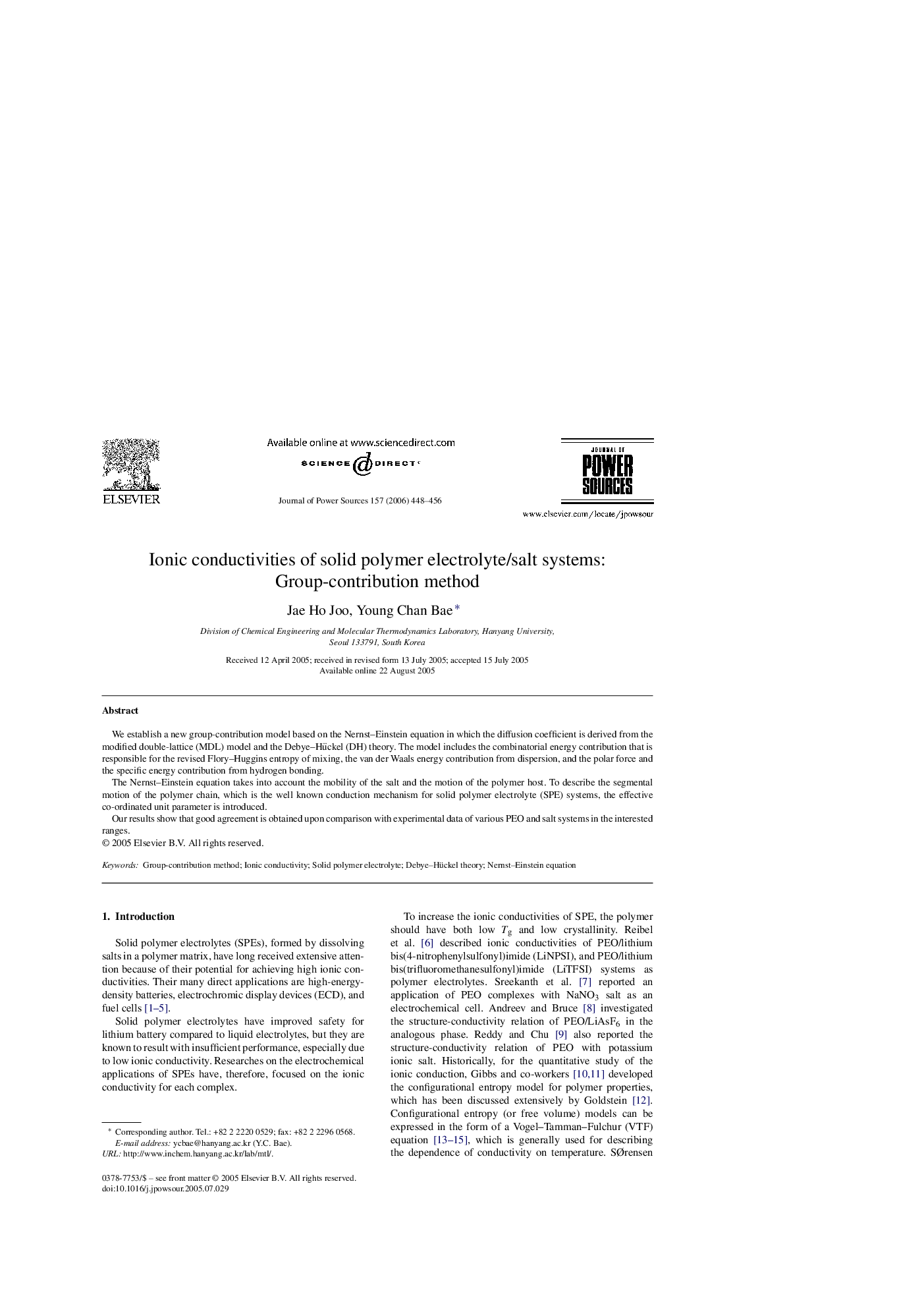| Article ID | Journal | Published Year | Pages | File Type |
|---|---|---|---|---|
| 1292693 | Journal of Power Sources | 2006 | 9 Pages |
We establish a new group-contribution model based on the Nernst–Einstein equation in which the diffusion coefficient is derived from the modified double-lattice (MDL) model and the Debye–Hückel (DH) theory. The model includes the combinatorial energy contribution that is responsible for the revised Flory–Huggins entropy of mixing, the van der Waals energy contribution from dispersion, and the polar force and the specific energy contribution from hydrogen bonding.The Nernst–Einstein equation takes into account the mobility of the salt and the motion of the polymer host. To describe the segmental motion of the polymer chain, which is the well known conduction mechanism for solid polymer electrolyte (SPE) systems, the effective co-ordinated unit parameter is introduced.Our results show that good agreement is obtained upon comparison with experimental data of various PEO and salt systems in the interested ranges.
